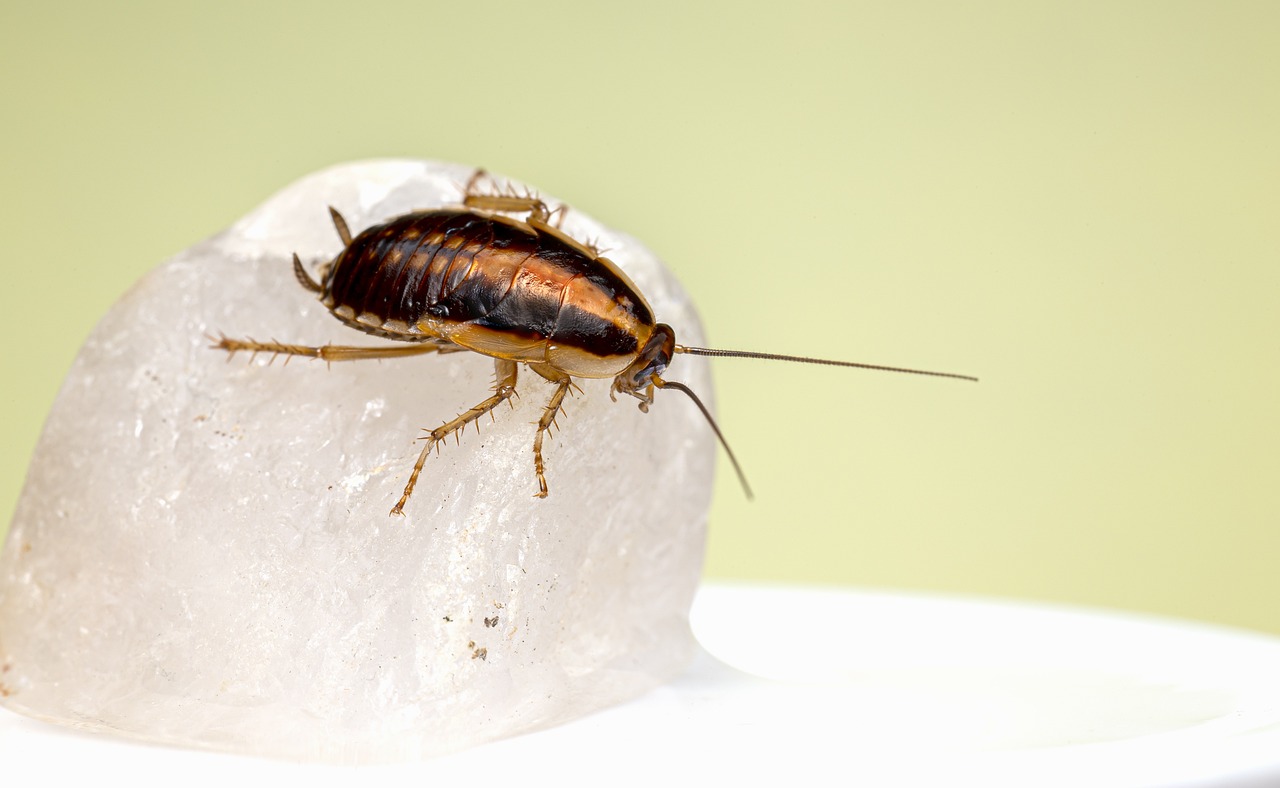How to Identify and Manage Seasonal Allergies in Pets
As pet owners, we want nothing but the best for our furry companions. However, just like humans, pets can suffer from seasonal allergies that can make their lives uncomfortable. This article explores the signs of seasonal allergies in pets, effective management strategies, and preventive measures to ensure your furry friends remain healthy and comfortable during allergy seasons. By understanding how to identify and manage these allergies, you can help your pet enjoy a happier, itch-free life.
Identifying the symptoms of seasonal allergies in pets is crucial for early intervention. Common signs include itching, sneezing, and skin irritations, which can significantly impact your pet's quality of life. Imagine your beloved dog constantly scratching at their ears or your cat sneezing every few minutes; it’s not just annoying for them, it can lead to serious health issues if left untreated. Pay close attention to any changes in your pet's behavior, especially during certain times of the year. Look for:
- Excessive scratching or licking
- Red or inflamed skin
- Runny eyes or nose
- Frequent sneezing or coughing
Being vigilant about these symptoms can help you catch allergies early, allowing for timely treatment and relief.
Understanding the types of allergens that affect pets can help in managing their exposure. Common allergens include pollen, mold, and dust mites, each presenting unique challenges during specific seasons. Just like humans, pets can have varying sensitivities to these allergens, and knowing what to look for can make a world of difference.
Pollen from trees, grasses, and weeds can trigger allergic reactions in pets. Recognizing the seasonal patterns of these allergens can aid in proactive management and symptom relief for affected pets. For instance, during the spring, blooming flowers and trees release pollen into the air, which can be a nightmare for sensitive pets. It’s essential to monitor your pet's behavior during these months for signs of discomfort and take necessary precautions.
During spring and summer, many plants release pollen, which can leave your pet feeling miserable. If you notice your pet itching more than usual or having trouble breathing, it might be time to take action. Simple measures like keeping your pet indoors during peak pollen times or wiping their paws after walks can help reduce exposure.
In the fall, ragweed pollen becomes prevalent, posing a risk for pets with allergies. Understanding this seasonal shift can help pet owners prepare and respond effectively. Consider investing in an air purifier for your home to help reduce indoor allergens during this time.
Mold and dust can also exacerbate allergy symptoms in pets. These allergens can be present year-round but tend to flourish in damp conditions. Identifying these triggers can help create a more comfortable living environment for your furry companions. Regular cleaning and using dehumidifiers can significantly reduce mold and dust levels in your home.
Seeking professional advice from a veterinarian is vital for accurate diagnosis and treatment of seasonal allergies in pets. They can recommend appropriate tests and treatments tailored to your pet's needs. Don't hesitate to reach out if you suspect that your pet is suffering from allergies; the sooner you act, the better.
Veterinarians may suggest various allergy testing methods, such as skin tests or blood tests, to determine specific allergens affecting your pet. This information is crucial for effective management. Knowing exactly what your pet is allergic to can help you create a targeted plan to minimize their exposure and improve their quality of life.
Based on the diagnosis, veterinarians can create personalized treatment plans, which may include medications, immunotherapy, or lifestyle changes to alleviate allergy symptoms in pets. It’s essential to follow your vet’s recommendations closely and monitor your pet’s response to treatment. Sometimes, it may take a little trial and error to find the right solution for your furry friend.
- What are the most common signs of allergies in pets? Look for excessive scratching, sneezing, runny eyes, and skin irritations.
- Can pets develop allergies later in life? Yes, pets can develop allergies at any age, even if they have never shown symptoms before.
- How can I help my pet during allergy season? Keep your pet indoors during peak pollen times, wipe their paws after walks, and consult your vet for appropriate treatments.

Recognizing Allergy Symptoms
Identifying the symptoms of seasonal allergies in pets is crucial for early intervention. Just like humans, our furry friends can experience discomfort when exposed to allergens, and recognizing these signs can make a world of difference in their quality of life. Common symptoms to look out for include itching, sneezing, and skin irritations. Imagine your pet constantly scratching at their ears or paws—this not only causes them distress but can also lead to secondary infections if left unchecked.
Allergy symptoms can vary widely among pets, and while some may show mild signs, others could experience severe reactions. For instance, a dog may develop a red, inflamed rash on their belly, while a cat might exhibit excessive grooming behavior, leading to bald patches. It's essential to observe your pet's behavior closely during allergy seasons. If you notice them shaking their head frequently or licking their paws excessively, these are strong indicators that they might be dealing with allergies.
Additionally, keep an eye out for respiratory symptoms such as coughing or wheezing. These can be particularly alarming, as they may suggest that your pet is having a hard time breathing due to environmental irritants. If your pet is experiencing any of these symptoms, it’s time to take action. Remember, just like we wouldn’t ignore a persistent sneeze or cough in ourselves, we shouldn't overlook similar signs in our pets.
To help you better understand the symptoms, here's a quick reference table:
| Symptom | Description |
|---|---|
| Itching | Persistent scratching or biting at the skin, ears, or paws. |
| Sneezing | Frequent sneezing episodes, often accompanied by nasal discharge. |
| Skin Irritations | Redness, swelling, or rash on the skin; may lead to hair loss. |
| Coughing | Dry or moist coughs that may indicate respiratory issues. |
| Excessive Licking | Licking of paws or body parts, often leading to wet spots or sores. |
By being vigilant and aware of these symptoms, you can take proactive steps to help your pet feel more comfortable. If you notice any combination of these signs, it’s time to consult with a veterinarian. They can provide a thorough examination and help determine whether your pet is suffering from seasonal allergies or if there’s another underlying issue at play.

Common Allergens for Pets
Understanding the types of allergens that can affect our furry friends is essential for any pet owner looking to keep their companions comfortable and healthy. Just like humans, pets can suffer from seasonal allergies caused by various environmental factors. The most common allergens include pollen, mold, and dust mites. Each of these allergens poses unique challenges and can be more prevalent during specific times of the year.
Pollen is one of the most notorious culprits when it comes to seasonal allergies in pets. This tiny, airborne irritant comes from trees, grasses, and weeds, and it can be particularly troublesome during certain months. For instance, during spring and summer, when nature is in full bloom, pollen counts can skyrocket, making it a challenging time for pets who are sensitive to these allergens. It’s important to recognize that not all pets will react the same way; some may exhibit mild symptoms, while others could experience severe discomfort.
In addition to pollen, mold is another allergen that can wreak havoc on your pet's health. Mold spores thrive in damp environments and can be found both indoors and outdoors. If your pet spends a lot of time in areas where mold is present, such as basements or poorly ventilated spaces, they may be at an increased risk of developing allergy symptoms. Dust mites, on the other hand, are microscopic creatures that live in household dust. They are particularly prevalent in bedding, carpets, and upholstered furniture. Pets can be exposed to dust mites year-round, but their presence can be more noticeable during spring cleaning or when the weather changes.
To effectively manage your pet's exposure to these allergens, it’s a good idea to monitor their environment closely. Here are some practical tips:
- Keep windows closed during high pollen seasons.
- Regularly clean your home to reduce dust and mold accumulation.
- Consider using air purifiers to filter out allergens.
- Wash your pet's bedding frequently to keep it free from dust mites.
By understanding these common allergens and taking proactive steps, you can significantly improve your pet's quality of life during allergy seasons. Always keep an eye on their behavior and health, and don’t hesitate to consult a veterinarian if you notice any persistent symptoms.
Q: How can I tell if my pet has seasonal allergies?
A: Look for signs such as itching, sneezing, runny eyes, and skin irritations. If your pet shows any of these symptoms, it might be time to consult your veterinarian.
Q: Can I give my pet over-the-counter allergy medications?
A: While some human medications may be safe for pets, it's crucial to consult your veterinarian before administering any medication to ensure it's appropriate for your pet's specific needs.
Q: Are certain breeds more prone to allergies?
A: Yes, some breeds are more susceptible to allergies than others. Breeds like Bulldogs, Retrievers, and Terriers often experience more allergic reactions compared to others.
Q: How can I reduce allergens in my home?
A: Regular cleaning, using air purifiers, and maintaining low humidity levels can help reduce allergens in your home, creating a more comfortable environment for your pet.
Pollen Allergies
Pollen allergies can be a significant source of discomfort for our beloved pets, and understanding how these allergens work is key to managing their effects. Just like humans, pets can suffer from allergic reactions when exposed to pollen from various sources such as trees, grasses, and weeds. These allergens become particularly prevalent during specific seasons, making it essential for pet owners to be vigilant. Imagine your pet feeling as if they are constantly surrounded by a cloud of itchy discomfort—this is often the reality for pets suffering from pollen allergies.
To effectively manage pollen allergies, it’s crucial to recognize the **seasonal patterns** of these allergens. For instance, tree pollen typically peaks in early spring, followed by grass pollen in late spring and summer, and finally, weed pollen in the fall. Each of these types can trigger different symptoms in pets, such as:
- Itching and scratching: Pets may scratch excessively, leading to skin irritations.
- Sneezing and coughing: Just like us, pets can sneeze or cough when they inhale pollen.
- Watery eyes and nasal discharge: Allergies can cause your pet's eyes to water and their nose to run.
Being proactive is essential. For example, during the peak pollen seasons, consider limiting your pet's outdoor activities, especially during the early morning or late afternoon when pollen counts are typically highest. After walks, it’s a good idea to wipe down your pet’s paws and fur to remove any pollen that may have clung to them. This simple step can significantly reduce their exposure and alleviate symptoms.
Moreover, maintaining a clean indoor environment can also help mitigate the effects of pollen allergies. Regularly vacuuming and using air purifiers can reduce the amount of pollen that enters your home. Think of it as creating a sanctuary for your pet, a safe haven where they can feel comfortable and free from the irritating effects of outdoor allergens.
In summary, understanding the nature of pollen allergies in pets is crucial for effective management. By recognizing the symptoms and being aware of the seasonal patterns of allergens, you can take proactive steps to ensure your furry friend remains comfortable and happy. Remember, a little bit of vigilance can go a long way in keeping your pet healthy during allergy season!
- How can I tell if my pet has pollen allergies? Look for symptoms like itching, sneezing, and watery eyes, especially during peak pollen seasons.
- What should I do if I suspect my pet has allergies? Consult your veterinarian for a proper diagnosis and treatment plan.
- Are there any home remedies for managing pollen allergies in pets? While some owners find relief with natural remedies, it's best to discuss any treatments with your vet first.
Spring and Summer Allergies
As the flowers bloom and the sun shines brighter, many pet owners find themselves facing a hidden challenge: . Just like humans, our furry friends can suffer from allergic reactions to the pollen released by various plants during these vibrant seasons. The most common culprits include trees, grasses, and wildflowers, all of which release a significant amount of pollen into the air. This can lead to a range of uncomfortable symptoms for your pet, such as persistent itching, sneezing, and even watery eyes.
During these months, it’s essential to be vigilant. You might notice your dog or cat itching more than usual, or perhaps they’re sneezing like they’ve just caught a whiff of something unpleasant. But why does this happen? Well, when your pet inhales or comes into contact with pollen, their immune system may overreact, causing inflammation and discomfort. This is their way of saying, "Hey, something's not right!"
To help manage your pet’s allergies during spring and summer, consider implementing a few strategies:
- Limit Outdoor Time: Try to keep your pet indoors during peak pollen times, which usually occur in the early morning and late afternoon.
- Regular Bathing: Bathing your pet frequently can help remove pollen from their fur. Use a gentle, hypoallergenic shampoo to avoid further irritation.
- Clean Living Spaces: Regularly vacuum and dust your home to reduce indoor allergens, such as pollen that may have made its way inside.
Additionally, keeping an eye on the pollen counts in your area can be a game-changer. Websites and apps dedicated to weather forecasts often include pollen levels, allowing you to plan your pet's outdoor activities accordingly. By being proactive, you can significantly reduce the chances of your pet experiencing discomfort.
Lastly, if you notice that your pet is particularly sensitive during these months, it’s a good idea to consult with your veterinarian. They can provide tailored advice and may recommend treatments such as antihistamines or topical creams to alleviate your pet's symptoms. Remember, a happy pet is a healthy pet, and with the right precautions, you can ensure that your furry friend enjoys the beauty of spring and summer without the burden of allergies.
Q: How can I tell if my pet has seasonal allergies?
A: Look for symptoms such as excessive itching, sneezing, watery eyes, or skin irritations. If you notice these signs, it's best to consult your veterinarian for a proper diagnosis.
Q: Are there specific breeds that are more prone to allergies?
A: Yes, certain breeds like Bulldogs, Retrievers, and Terriers are more susceptible to allergies due to their genetic makeup. However, any pet can develop allergies at any time.
Q: Can I give my pet over-the-counter allergy medications?
A: It's crucial to consult your veterinarian before administering any medications, as some human allergy medications can be harmful to pets.
Q: What are some natural remedies for pet allergies?
A: Some pet owners find relief through natural remedies like omega-3 fatty acids, local honey, or apple cider vinegar, but always discuss these options with your vet first.
Fall Allergies
As the leaves begin to change color and the air turns crisp, many pet owners may notice their furry friends experiencing discomfort due to . One of the primary culprits during this season is ragweed pollen, which can travel long distances and affect pets even if they don't come into direct contact with the plants. This is particularly concerning for dogs and cats who spend time outdoors, as their exposure can lead to a range of allergic reactions.
During fall, it's essential to be vigilant about your pet's behavior. Symptoms such as excessive itching, sneezing, and watery eyes can indicate that your pet is struggling with seasonal allergies. These signs often worsen after outdoor activities, especially on windy days when pollen levels are higher. If you notice your pet scratching more than usual or developing red, inflamed skin, it’s time to take action.
To help manage your pet's fall allergies, consider the following strategies:
- Limit Outdoor Exposure: Try to keep your pet indoors during peak pollen times, typically in the early morning and late afternoon.
- Regular Baths: Bathing your pet regularly can help wash away pollen and other allergens that cling to their fur.
- Clean Living Spaces: Regularly vacuum and dust your home to reduce allergens, including mold spores and dust mites.
Additionally, keeping track of pollen forecasts can be beneficial. Many weather websites and apps provide pollen counts, allowing you to plan your pet's outdoor activities accordingly. By understanding when the pollen levels are high, you can make informed decisions to protect your pet from unnecessary exposure.
If your pet's symptoms persist or worsen, it’s crucial to consult with a veterinarian. They can provide tailored advice and may recommend allergy testing to pinpoint specific triggers. This way, you can implement a more effective management plan that could include medications or immunotherapy tailored to your pet's needs.
In summary, fall allergies can be a significant issue for pets, particularly due to ragweed pollen. By recognizing the symptoms and taking proactive measures, you can help ensure your furry friend remains comfortable and healthy throughout the season. Remember, your vigilance is key to providing the best care for your pet during these challenging months.
Q: What are the common symptoms of fall allergies in pets?
A: Common symptoms include itching, sneezing, watery eyes, and skin irritations. If you notice these signs, it could indicate that your pet is experiencing allergies.
Q: How can I minimize my pet's exposure to allergens in the fall?
A: Limit outdoor activities during peak pollen times, bathe your pet regularly to remove allergens from their fur, and keep your home clean to reduce indoor allergens.
Q: When should I consult a veterinarian about my pet's allergies?
A: If your pet's symptoms persist despite home management strategies or worsen over time, it's important to consult a veterinarian for professional advice and potential treatment options.
Mold and Dust Allergies
Mold and dust allergies are often overlooked when it comes to our furry friends, but they can be just as bothersome as pollen allergies. These allergens are notorious for lurking in our homes, especially in damp or poorly ventilated areas. Mold spores can float through the air, while dust mites thrive in bedding, carpets, and upholstery. If your pet is sneezing, itching, or experiencing skin irritations, it could be due to these hidden triggers.
One of the most common signs of mold and dust allergies in pets is persistent scratching or biting at the skin, which can lead to secondary infections. Imagine your pet trying to scratch an itch that just won’t go away—it's not only uncomfortable for them but can also lead to more serious health issues. Additionally, if you notice your pet has watery eyes or is sneezing more than usual, it might be time to investigate the presence of mold or dust in your home.
To combat these allergens, it’s essential to maintain a clean living environment. Regularly vacuuming your home using a vacuum with a HEPA filter can significantly reduce the amount of dust and allergens present. Additionally, consider using air purifiers to help filter out mold spores and dust particles from the air. Keeping your pet's bedding clean and washing it frequently can also minimize exposure to dust mites.
Moreover, if you live in an area prone to mold growth, such as regions with high humidity, it’s crucial to monitor your home for any signs of mold. This can include:
- Visible mold growth on walls or ceilings
- A musty odor in certain areas of your home
- Excess moisture in bathrooms, kitchens, or basements
By addressing these issues proactively, you can create a safer and more comfortable environment for your pet. Remember, a healthy home leads to a happy pet! If you suspect that mold or dust allergies are affecting your furry friend, don’t hesitate to consult with your veterinarian for advice on managing these allergies effectively.
Q: How can I tell if my pet has mold or dust allergies?
A: Look for symptoms like excessive scratching, sneezing, watery eyes, or skin irritations. If these symptoms persist, consult your veterinarian.
Q: What can I do to reduce mold and dust in my home?
A: Regular cleaning, using HEPA filters, and maintaining low humidity levels can help reduce allergens. Make sure to wash your pet's bedding frequently.
Q: Can mold and dust allergies be treated?
A: Yes, treatment options may include medications, allergy testing, and lifestyle changes recommended by your veterinarian.

Consulting a Veterinarian
When it comes to managing your pet's seasonal allergies, seeking professional advice from a veterinarian is not just a good idea—it's essential. Just like us, our furry friends can suffer from a variety of allergic reactions that can significantly affect their well-being. A veterinarian has the expertise to accurately diagnose these allergies and recommend the best course of action. After all, you wouldn’t want to guess what’s bothering your pet, would you?
During your visit, the vet will likely begin by asking a series of questions about your pet's symptoms, behavior, and any changes you’ve noticed. This initial consultation is crucial for gathering information that can lead to a proper diagnosis. For instance, they may ask about:
- When the symptoms first appeared
- Specific triggers you’ve noticed
- Your pet’s diet and lifestyle
Once the vet has a clear picture, they may recommend various allergy testing options. These tests can range from simple skin tests to more complex blood tests, each designed to pinpoint the specific allergens affecting your pet. Knowing exactly what your pet is allergic to can be a game changer in how you manage their symptoms. Imagine being able to dodge those pesky pollen clouds or moldy corners of your home!
After identifying the allergens, your veterinarian can develop a personalized treatment plan. This plan may include medications such as antihistamines or corticosteroids to relieve symptoms, or even immunotherapy to help desensitize your pet to specific allergens over time. In some cases, lifestyle changes may also be recommended, such as keeping your pet indoors during high pollen counts or using air purifiers to minimize dust and mold exposure.
Ultimately, consulting a veterinarian is an investment in your pet's health and happiness. With their guidance, you can navigate the challenges of seasonal allergies effectively, ensuring your furry friend remains comfortable and vibrant throughout the year.
Here are some common questions pet owners have regarding seasonal allergies:
- How can I tell if my pet has allergies? Look for signs such as excessive itching, sneezing, or skin irritations. If these symptoms persist, consult your veterinarian.
- Can seasonal allergies be treated? Yes, there are various treatment options available, including medications and lifestyle adjustments.
- Are certain breeds more prone to allergies? Some breeds are more susceptible, but any pet can develop allergies at any time.
Allergy Testing Options
When it comes to managing your pet's seasonal allergies, understanding the specific allergens affecting them is crucial. This is where allergy testing comes into play. A veterinarian can guide you through various testing options to pinpoint the triggers that cause your furry friend discomfort. It's like having a treasure map leading you directly to the source of the problem!
There are several methods of allergy testing, each with its own advantages and considerations. The two most common types are skin tests and blood tests. Skin tests typically involve exposing your pet to small amounts of potential allergens and observing their reactions. This method can provide quick results and is often seen as the gold standard for allergy testing. However, it requires a skilled veterinarian and might not be suitable for all pets, especially those with severe skin conditions.
On the other hand, blood tests measure the level of specific antibodies your pet produces in response to allergens. While this method is less invasive and can be performed in a single visit, it may take longer to get results. Additionally, blood tests can sometimes yield false positives or negatives, so it’s essential to interpret the results with your vet's guidance.
Here's a quick comparison of the two methods:
| Testing Method | Advantages | Disadvantages |
|---|---|---|
| Skin Test | Quick results, direct observation of reactions | Requires skilled personnel, may not be suitable for all pets |
| Blood Test | Less invasive, can be done in one visit | Longer wait for results, potential for false results |
Regardless of the method chosen, the goal is to gather as much information as possible to create an effective management plan. Once the allergens are identified, your veterinarian can tailor a treatment plan that may include medications, immunotherapy, or lifestyle modifications to help alleviate your pet's symptoms. Always remember that the journey to understanding your pet’s allergies is a partnership between you and your veterinarian. Together, you can ensure that your beloved companion lives a comfortable and happy life.
- How long does allergy testing take? - The duration varies by method; skin tests can provide immediate results, while blood tests may take several days.
- Are allergy tests safe for pets? - Yes, both skin and blood tests are generally safe when performed by a qualified veterinarian.
- Can I do allergy testing at home? - Home testing is not recommended; professional veterinary testing ensures accurate results and safety.
Treatment Plans
Once you've consulted with your veterinarian and received a diagnosis for your pet's seasonal allergies, the next step is to develop an effective treatment plan. This plan is tailored to your pet's specific needs and can include a variety of approaches. Each pet is unique, and what works for one might not work for another, which is why a personalized strategy is so important.
One of the most common components of treatment plans is medication. Your veterinarian may prescribe antihistamines or corticosteroids to help alleviate symptoms like itching and inflammation. These medications can be incredibly effective, but they often come with potential side effects, so it's crucial to follow your vet's instructions closely. In some cases, your vet might recommend topical treatments such as medicated shampoos or sprays that can provide localized relief for irritated skin.
Another option that has gained popularity in recent years is immunotherapy. This treatment involves exposing your pet to small amounts of the allergens they are sensitive to, gradually building their tolerance over time. While this approach can take several months to show results, it can lead to long-term relief from allergy symptoms and reduce the need for ongoing medication.
In addition to medication and immunotherapy, lifestyle changes can play a significant role in managing your pet's allergies. Here are some strategies that can help create a more comfortable environment for your furry friend:
- Regular Cleaning: Frequent vacuuming and dusting can help minimize exposure to dust mites and other indoor allergens.
- Bathing: Regular baths with hypoallergenic shampoos can help remove allergens from your pet's skin and coat.
- Air Filtration: Using HEPA filters in your home can significantly reduce airborne allergens, making the environment more pleasant for your pet.
It's essential to maintain open communication with your veterinarian throughout this process. Regular check-ups will allow you to monitor your pet's progress and adjust the treatment plan as necessary. Remember, managing seasonal allergies is often a marathon, not a sprint. Patience and persistence are key to finding the right balance that keeps your pet comfortable and happy.
Here are some common questions pet owners might have regarding seasonal allergies and their treatment:
- How can I tell if my pet has seasonal allergies? Look for signs such as excessive itching, sneezing, or skin irritations, especially during certain seasons.
- Are there natural remedies for pet allergies? Some pet owners find relief through natural remedies like omega-3 fatty acids or local honey, but always consult your vet before trying new treatments.
- Can seasonal allergies lead to more severe health issues? Yes, if left untreated, allergies can lead to secondary infections or more severe skin conditions.
Frequently Asked Questions
- What are the common symptoms of seasonal allergies in pets?
Pets suffering from seasonal allergies often show signs such as itching, sneezing, and skin irritations. If you notice your furry friend scratching more than usual or having watery eyes, it might be time to investigate further.
- How can I identify the allergens affecting my pet?
Identifying allergens can be tricky, but common culprits include pollen, mold, and dust mites. Keeping a diary of your pet's symptoms and the environment can help pinpoint triggers. Consulting with a veterinarian for allergy testing is also a great step.
- What should I do if my pet shows signs of allergies?
If you suspect your pet has allergies, the first step is to consult your veterinarian. They can provide a proper diagnosis and recommend treatment options, which may include medications or lifestyle changes to ease your pet's discomfort.
- Are there specific times of the year when pets are more likely to have allergies?
Yes! Pets often experience allergies during spring and summer due to high pollen counts from plants. Fall can also be problematic, especially with ragweed pollen. Being aware of these seasonal patterns can help you manage your pet's symptoms better.
- Can I prevent my pet from getting allergies?
While you can't completely prevent allergies, you can take steps to minimize exposure. Regularly cleaning your home, using air purifiers, and keeping your pet indoors during high pollen days can help keep their symptoms at bay.
- What treatment options are available for pets with seasonal allergies?
Treatment plans can vary but often include medications to relieve symptoms, immunotherapy to build tolerance, or lifestyle changes to reduce exposure to allergens. Your veterinarian will tailor a plan to fit your pet's specific needs.
- How can I make my home more comfortable for an allergic pet?
To create a comfortable environment, consider frequent cleaning to reduce dust and mold, using hypoallergenic bedding, and ensuring good ventilation. These steps can significantly improve your pet's quality of life during allergy season.



















